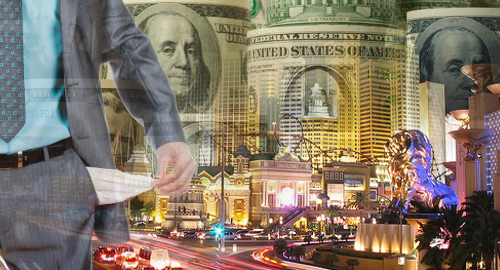 Casinos on the Las Vegas Strip had one of their best years in recent memory in terms of writing off uncollectable gambling debts, according to 2016 figures.
Casinos on the Las Vegas Strip had one of their best years in recent memory in terms of writing off uncollectable gambling debts, according to 2016 figures.
David Schwartz, a longtime number cruncher at the University of Nevada, Las Vegas’ Center for Gaming Research, filed a report last month examining credit issued to gamblers by Nevada casinos, using data culled from the Nevada Gaming Abstract, dipping as far back as 1980.
Nevada casinos don’t directly reveal their credit activity but the Abstract’s casino expenses section does contain a column indicating ‘bad debt’ provisions, which Schwartz says offers insights into how well casinos are managing their credit risks.
In fiscal 2016, Strip casinos – which bear the overwhelming bulk of the state’s bad debt expenses – reported writing off bad debts of nearly $110.2m. While that sounds massive, it’s actually the second-lowest total in the past 10 years and pales in comparison to some of the bad debt provisions Strip casinos made in the 1990s.
For example, fiscal 2014’s bad debts were just $79m, which was the lowest total since 2005’s $46.2m. All the other years between 2007-2015 were higher than 2016’s total, with 2009’s $178m write-off leading the pack.
The 2009 figure corresponds with the previous decade’s global economic collapse that did so much damage to the casino industry. Schwartz noted that the bad debt figures tended to shoot upward in periods of economic downturn, including 1981-83, 1991, and 2009-10.
The highest recorded bad debt sum on record came in 2000, when casinos endured nearly $231m in uncollectable markers. The years before and after were nearly as grim, with $224m written off in 1999 and $219m in 2001. Clearly, there were an awful lot of internet kajillionaires who suddenly found their stock options worthless when the dot-com bubble burst.
In terms of bad debts as a percentage of overall gaming revenue, 1983 was the worst at 9.3%. The best year was 2005’s 0.9%, while the 2016 figure came in at 1.9%.